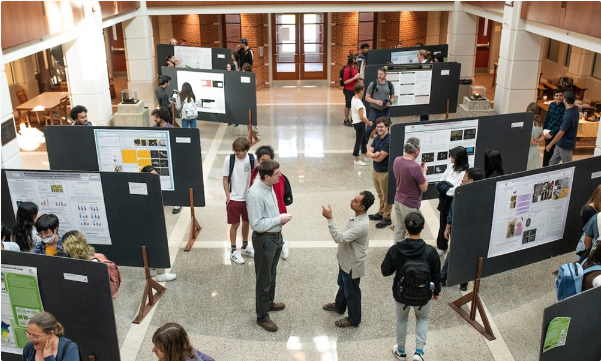Document Type
Poster
Publication Date
Fall 2021
Abstract
Apis mellifera, or more commonly named, honeybees, are known for their keen ability to navigate the natural world in search of an unpredictable food source; nectar. Honeybees have a trichromatic visual spectrum which allows them to find flowers through vision, but their spectra is based on ultraviolet, blue and green (Riddle, 2016). They also have a circadian rhythm that allows them to know the optimal times to leave the hive in search of food (Moore et al. 1989). The social behaviors of honeybees also closely mirror our own and has caused numerous scientists to investigate whether they have the capacity to hold memories and learn. This experiment was split up into three segments and set out to determine whether honeybees could be trained to fly to a designated spot in order to get food, and whether they could differentiate between two similar food sources.
Recommended Citation
Jones, Sophia and Dorner, Claire, "Assessing the Cognitive and Social Behaviors of Apis mellifera in Finding Food" (2021). Annual Student Research Poster Session. 66, Scholarly and Creative Work from DePauw University.
https://scholarship.depauw.edu/srfposters/66



Comments
Thank you to the Office of Sustainability for providing me this opportunity to work as a beekeeper all summer. Also thank you to Professor Henning Schneider for all of the advice.